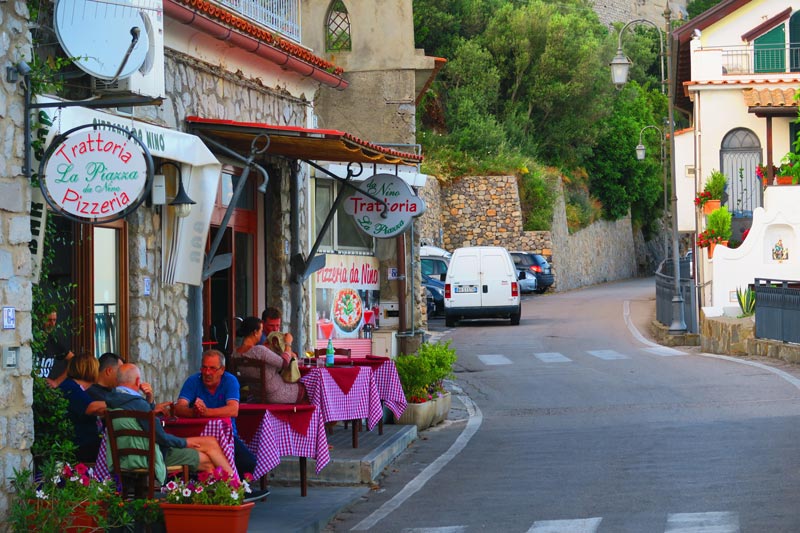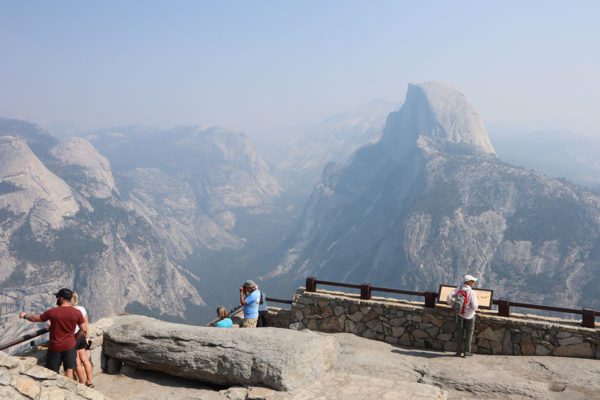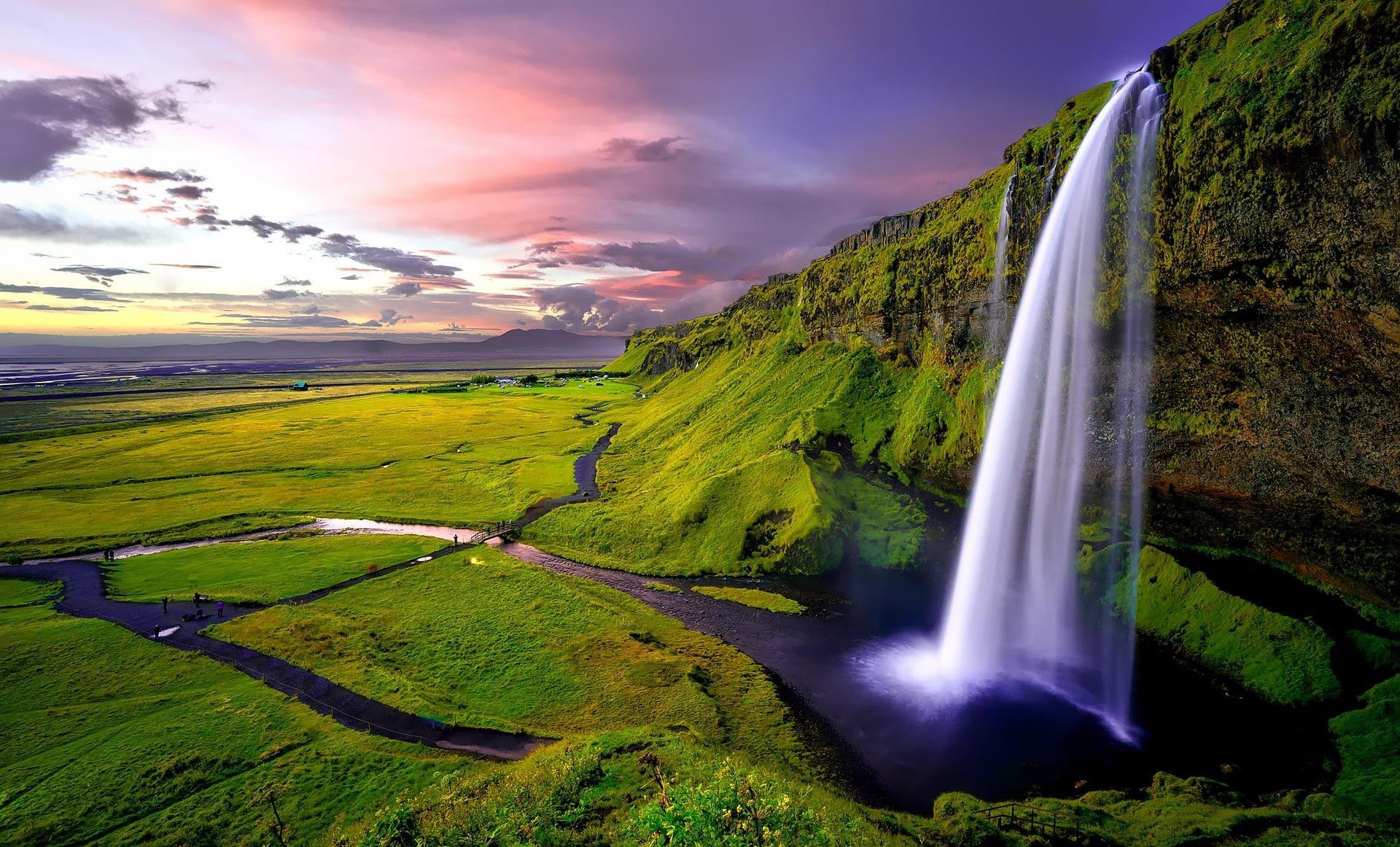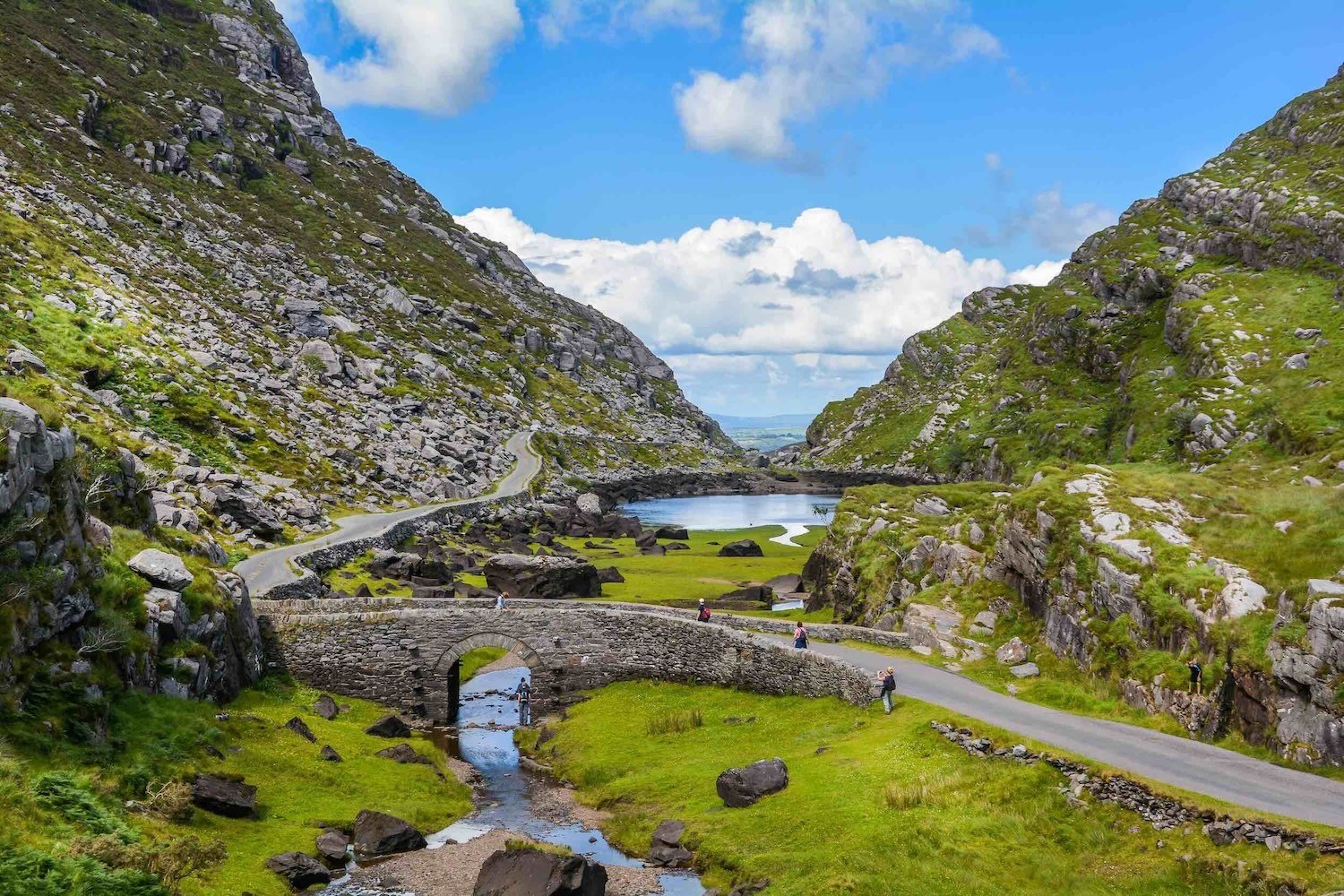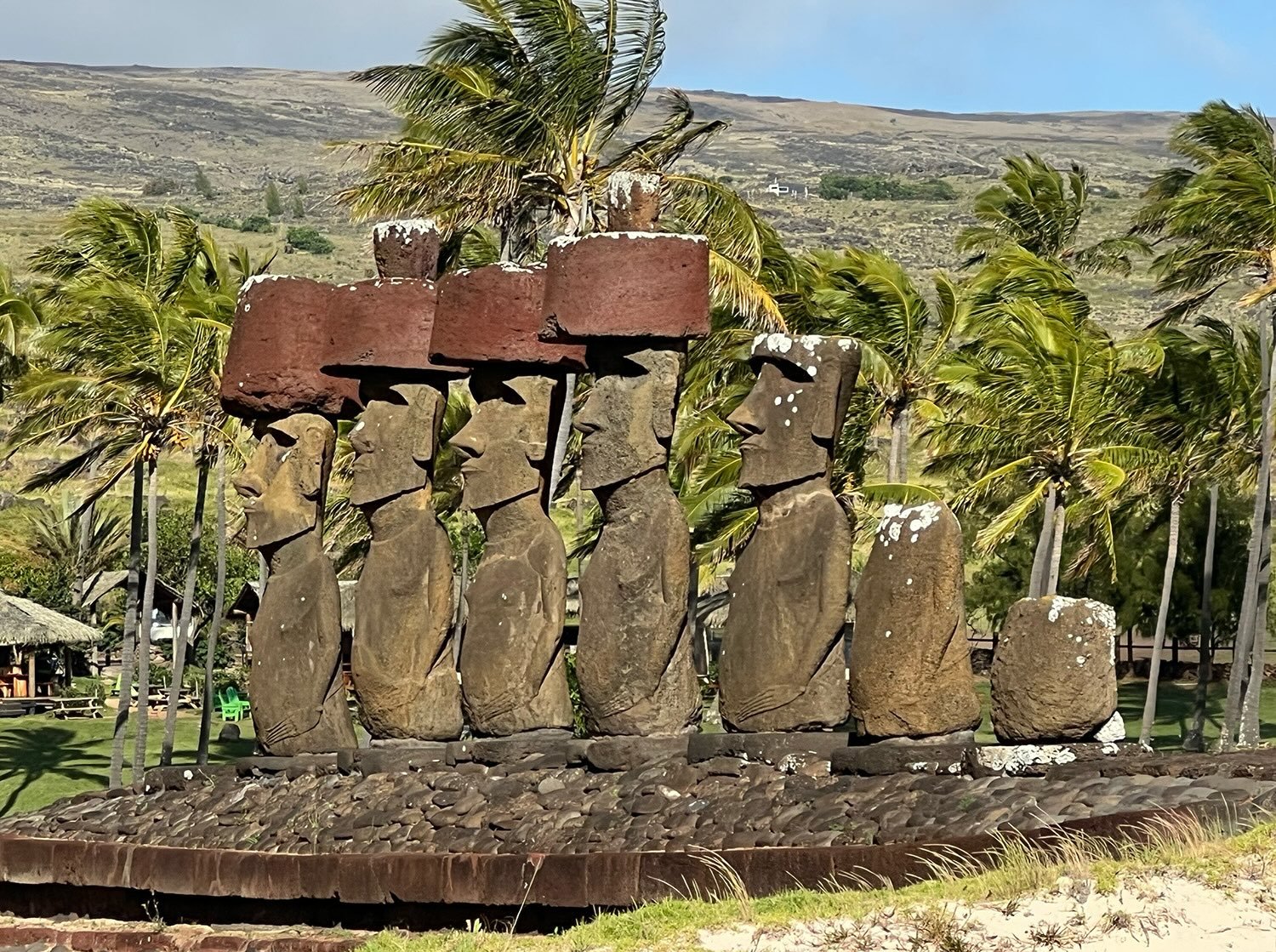7 Days in Naples and the Amalfi Coast Itinerary
Part 2: Two Days in Amalfi, Ravello & Positano
The second part of our 7 days on the Amalfi Coast itinerary takes us to its most scenic sections. We’ll spend the first day exploring the hilltop village of Ravello before heading down to the coast (and the crowds) in Amalfi. On the second day, we’ll hike the Path of the Gods and explore Positano and its surroundings.

Follow all the places mentioned in this section with this companion map, simply click on the image to open the map.
Day 3: Ravello & Amalfi
Ravello and Amalfi are two of the most famous stops on the coast. Both villages are steeped with ancient history, but their claim to fame is thanks to their days as posh summer vacation destinations for the rich, famous, and royalty.
With Amalfi squeezed between the mountains and the coastline and Ravello’s challenging hilltop location, exploring the two is no easy task during the tourist season. My recommendation is to start your day early in Ravello and make your way down to Amalfi. Ravello is far more scenic and enjoyable, so having a few hours before the tourist buses arrive is a big plus. Ravello is also a romantic place to base yourself, and it has a few dozen appealing accommodations.
In order to avoid having to search for parking in Amalfi after your Ravello visit, I recommend parking your car in Amalfi and using the public bus to get to Ravello and back down to Amalfi. Try the Luna Rossa garage, on the coastal road between Amalfi and Atrani.
Morning in Ravello
After a lovely breakfast with glorious views at the World Center, we drove straight to Ravello, passing Amalfi on the way. The drive to Ravello was quite challenging but very scenic. The road snaking up the mountain is narrow and even capped to one lane in certain sections, so be on the lookout for traffic lights and adhere to them!
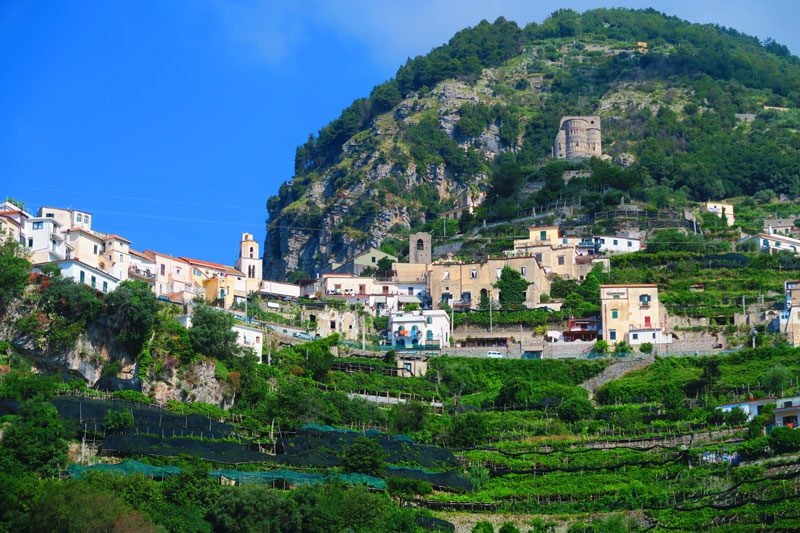
Upon reaching the village, the driving doesn’t get any easier, but the views are to die for. The stunning coastline scenery is some of the Mediterranean’s best, and, once again, it’s incredible to see how locals have changed the impenetrable landscape with their homes and agricultural plots.
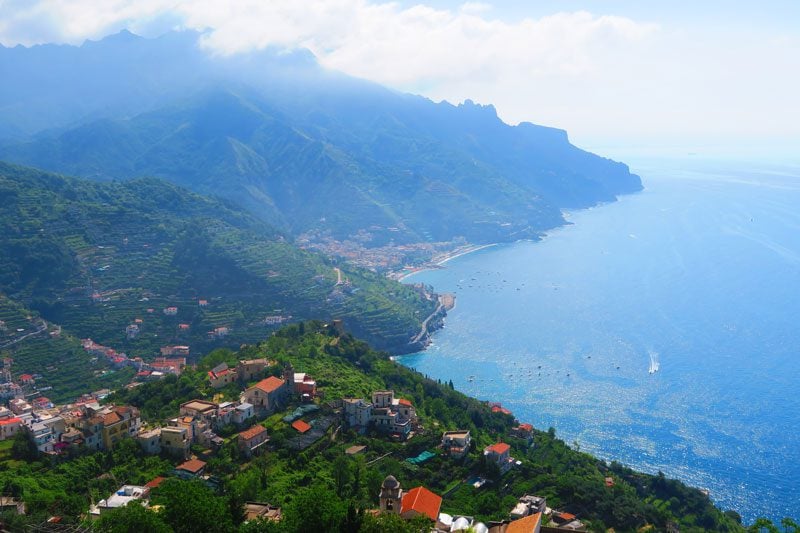
We parked in the garage of the Oscar Niemeyer Auditorium for a few Euro per hour, which are dispensed into a machine, so be sure to have enough change and regularly check the time. Arriving at around 9 am, the village was still pretty much free of tourists.
Villa Rufolo
The highlight of your visit to Ravello is the mansion and gardens of the Villa Rufolo, so I recommend starting here before the crowds arrive. While the mansion’s interior is impressive, it’s the exterior that will take your breath away.
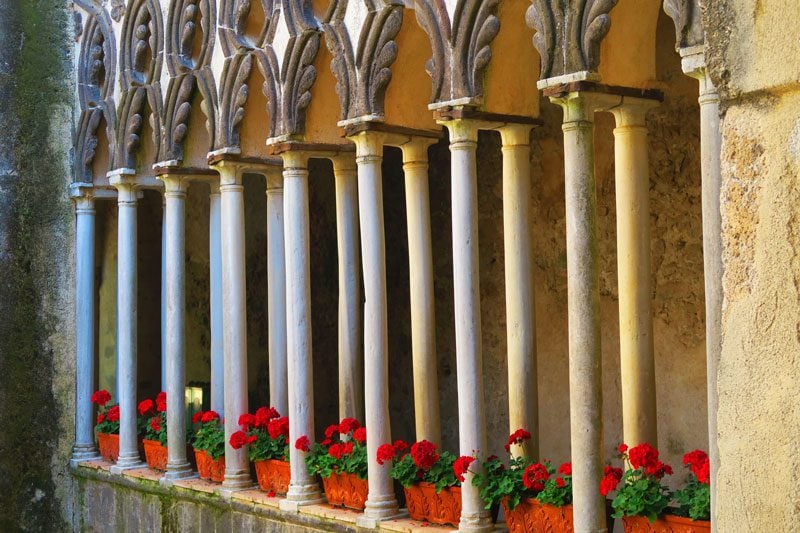
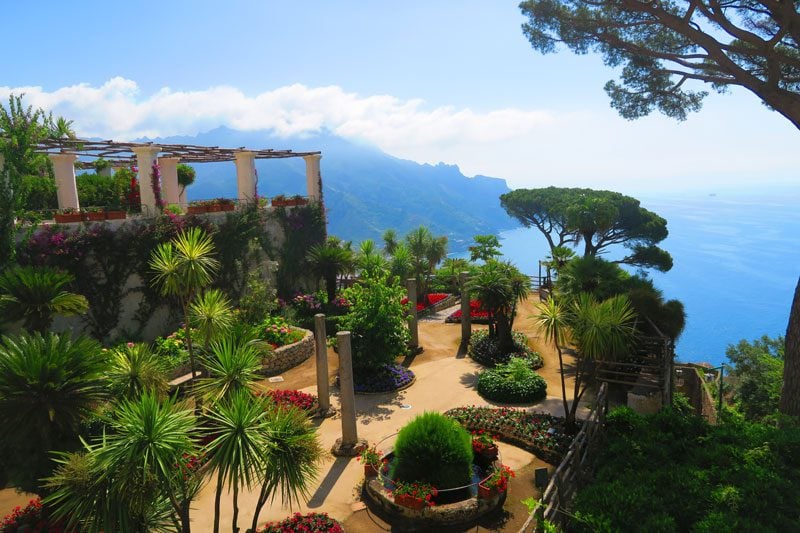
You’ll find some of the Amalfi Coast’s most scenic images from the edge of its gardens. It’s a good idea to hang around here for a while to let everything sink in. The villa’s gardens also host numerous concerts throughout the summer season, so be sure to check the lineup if you’re looking for some evening activity. You can also climb its tower, which exits to a small terrace, but it was a disappointing climb after the views from the gardens.
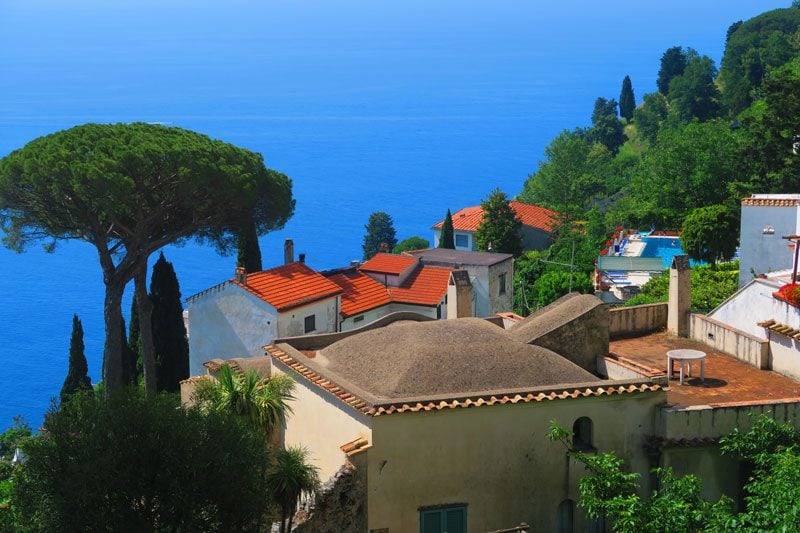

Piazza Duomo
The obvious next stop after Villa Rufolo is Ravello’s main square and cathedral. This is a good spot for overpriced coffee and some window shopping. The cathedral itself is nice but nothing mind-blowing (free to enter).
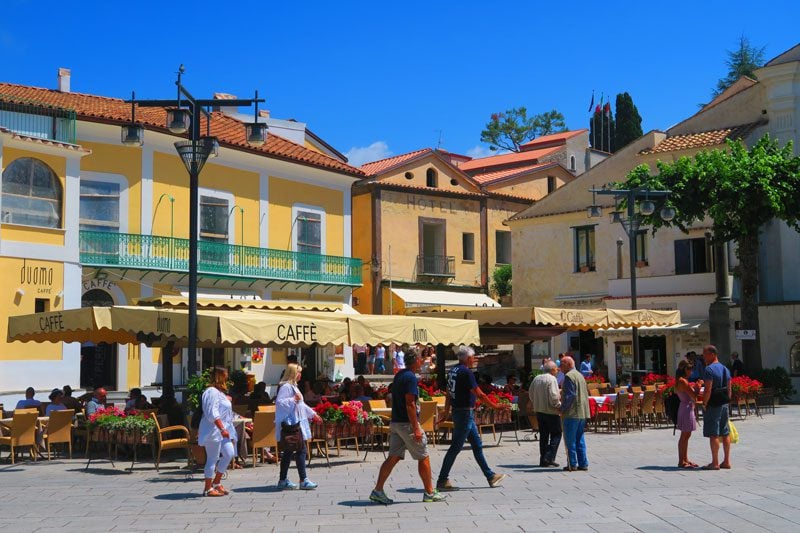
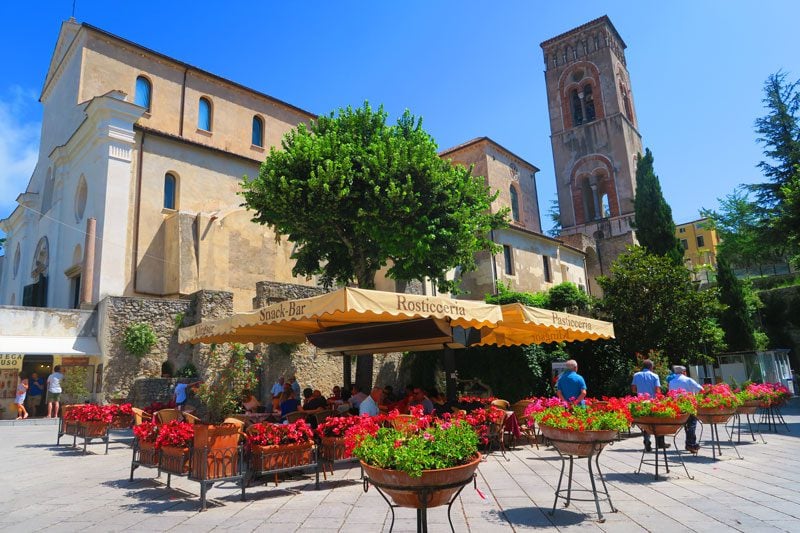
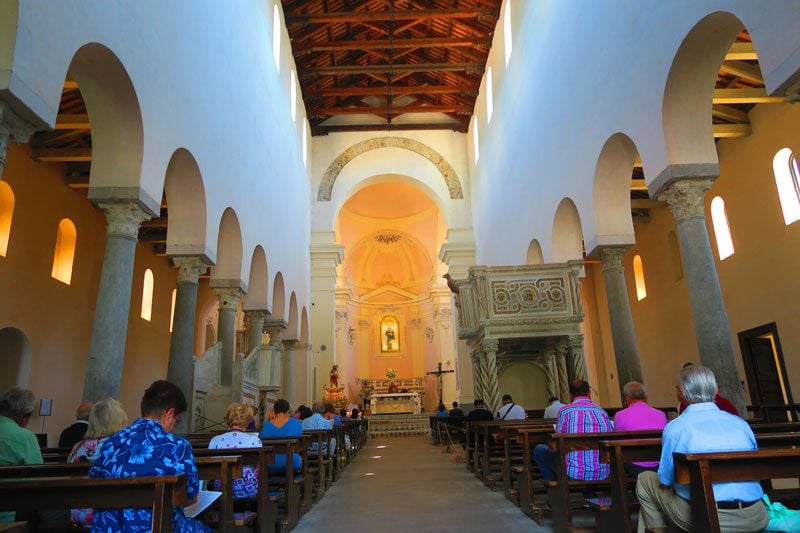
Via S. Giovanni del Toro
This was a very interesting walk with a lovely garden (Giardini Principessa di Piemonte) and a couple of five-star hotels along the way. The street ends at Chiesa di San Giovanni del Toro, which doesn’t see many crowds and is impressively made entirely from stone.
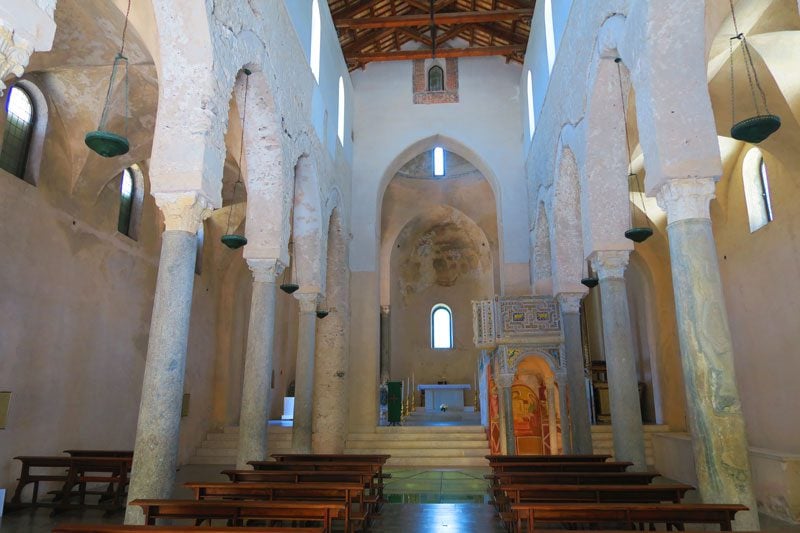
Via S. Cosma
Searching for the road to Villa Cimbrone and its gardens, we got totally lost and ended up walking along this street, which eventually turns into a path connecting neighboring villages with Ravello. In some sections, it is actually carved into the mountain to allow people to pass. We really enjoyed the views from here and the local feel of the area, not to mention the fig trees and colorful bougainvillea to add to the romance of the area.
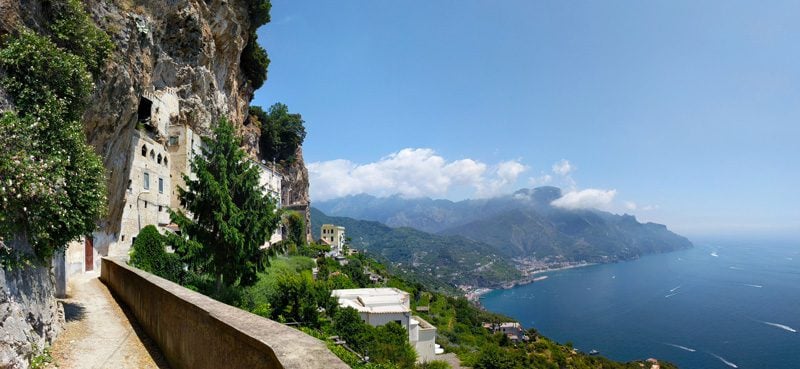
Ravello to Amalfi
The road heading down from Ravello to Amalfi offered a few scenic stops. From here, you can admire the views of the seaside village of Atrani, the Toro del Ziro, and the lemon groves that cover the mountainsides like carpets. Down in the valley, you can see some of the paper mills for which this area used to be famous.
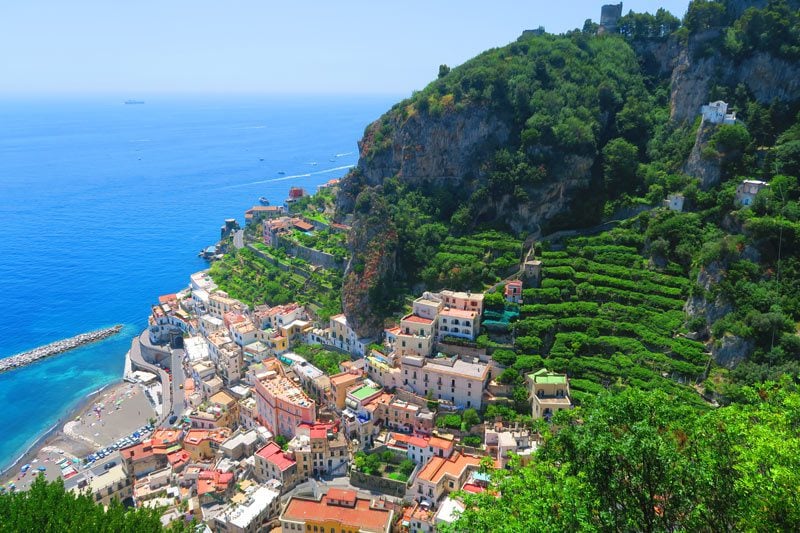
Amalfi
Parking in Amalfi was an absolute nightmare as all garages were full. To make a long story short, we circled back and parked on the very same road to Ravello. That meant we had to walk down to the coastal road and walk through the village of Atrani just to make it to Amalfi (and walk back).
Take extra caution in this part of the Amalfi Coast both as a pedestrian and as a driver. Locals drive recklessly and many buses share the road without any space for error (literally).
The bottom line regarding Amalfi is that, yes, it is beautiful, but my god, tourists have overtaken it (and this was just the start of June). The village boasts a couple of black sand beaches and pastel-colored houses that impressively cling to the mountainside – creating a beautiful panorama. But it is just very crowded around here and unpleasant.
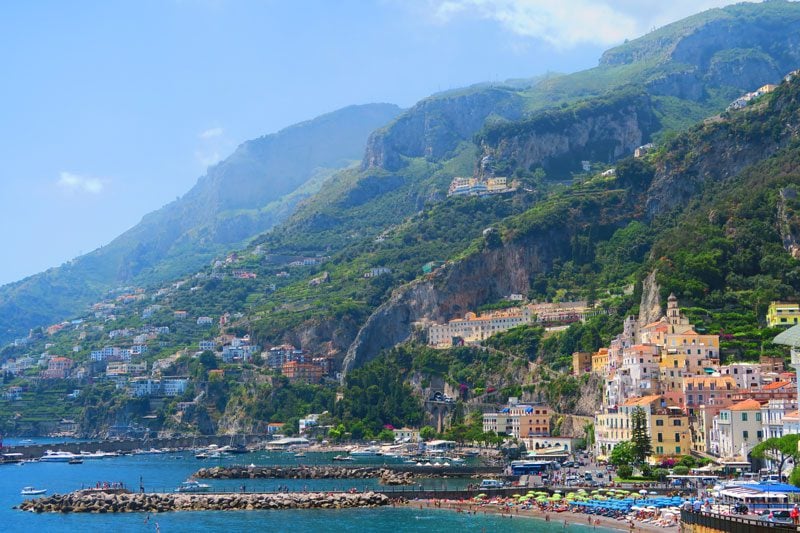
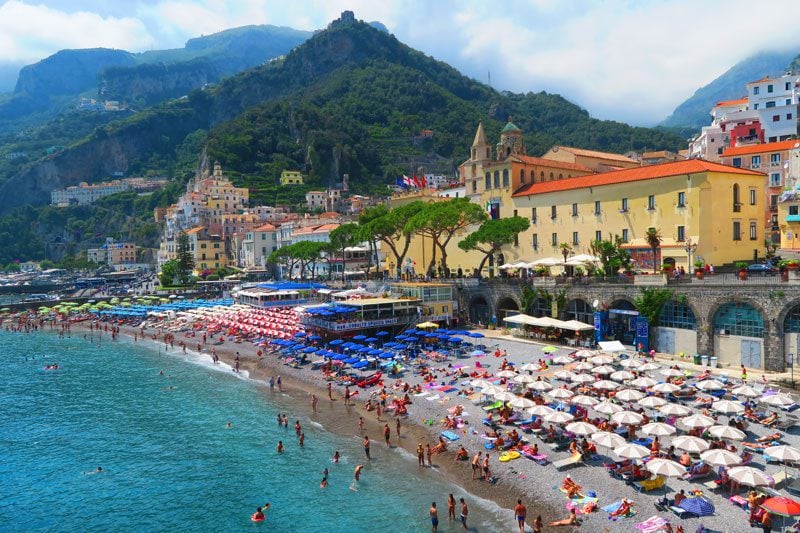
If you’re after some beach time, the ones in Atrani and on the far end of Amalfi are more pleasant.


The Duomo
Set atop a flight of steps and commanding fine views over the central plaza, the 13th-century Cathedral of Amalfi celebrates the apostle St. Andrew, who is buried in the cathedral’s crypt. It is absolutely worth the price of admission, so don’t get lazy. Besides the main hall, be sure to explore the Alhambra-like cloister and the magnificent crypt.
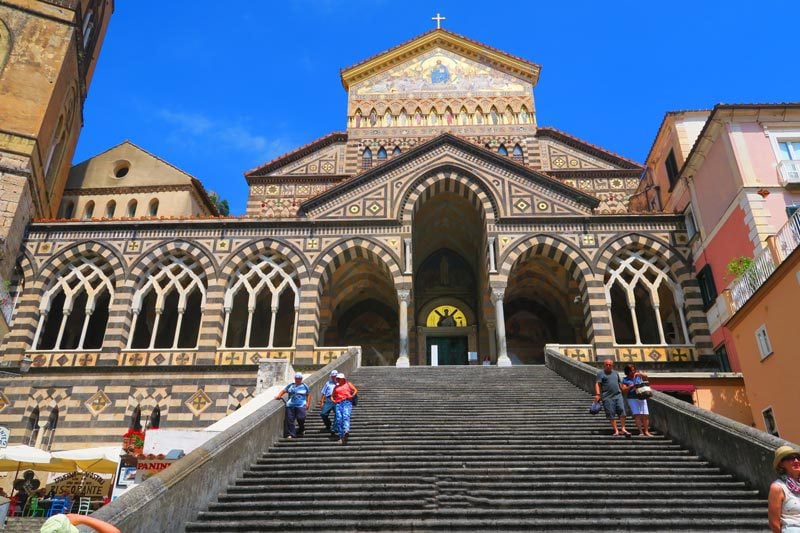
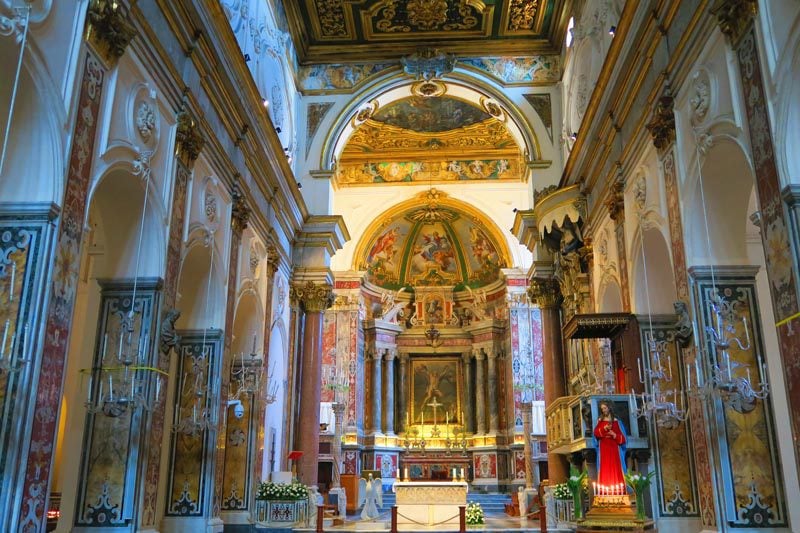
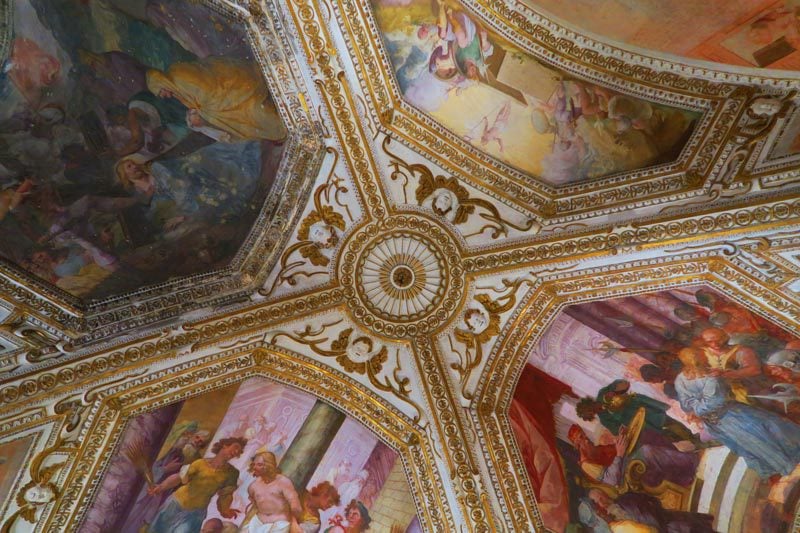

The Municipio
Amalfi’s main plaza is the obvious choice for lunch, that is, if you can find a table. We had no such luck and ate in Trattoria Pizzeria “Al Teatro” – a small family-owned restaurant off some interior alley.
Paper Mill Museum
Walking from the main square along Via Pietro Capuano, you can literally hear the water running beneath your feet. The street is actually constructed in a gorge. This was, back in the day, Europe’s hub for paper production. We paid a visit to the Museo della Carta to learn about the history of paper production in the area. In fact, this is the oldest paper mill in Europe, but there used to be 65 others around Amalfi.
We were led to a damp room carved into the mountain where a small factory still turns cotton into paper. Our guide explained that cotton was imported to Amalfi, and the water flowing down from the mountains provided the energy to turn the mill’s wheels. As for the paper’s color? That was owed to the “secret ingredient”… animal urine! The museum visit isn’t a must, but children and curious travelers will enjoy the experience.

Day 4: Path of the Gods Hike & Positano
Today will be our most active day on the Amalfi Coast. We’ll embark on the Amalfi Coast’s finest hike and visit the stunning seaside village of Positano. To end the day, we’ll hit the beach while avoiding the crowds.
Hiking the Path of the Gods
Connecting the villages of Agerola and Positano, the Sentiero degli Dei (Path of the Gods) is the best hike on the Amalfi Coast. Its most popular leg is between Bomerano and Nocelle, and you can hike in either direction. However, the Bomerano to Nocelle route is far easier as it’s almost completely downhill and ends in the vicinity of Positano.
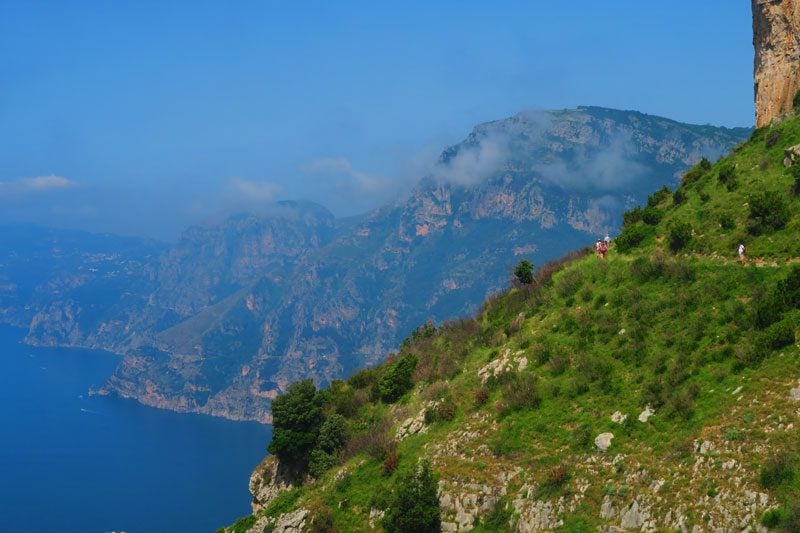
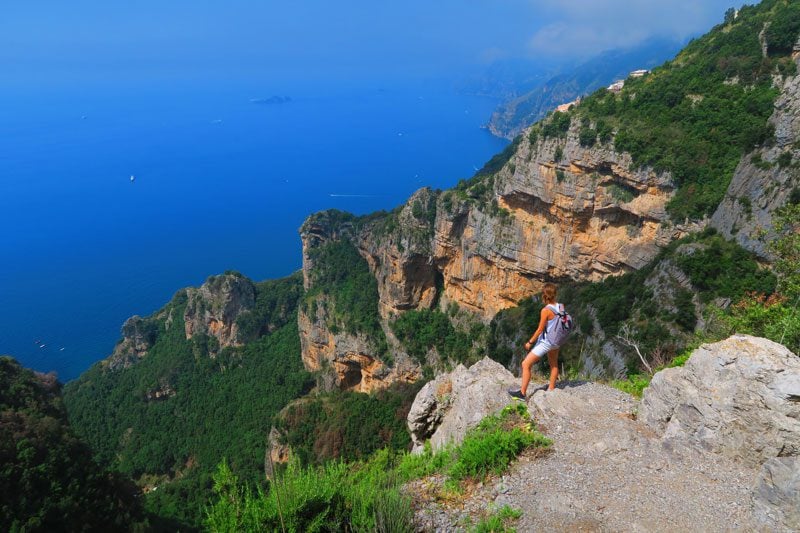
Legend has it that the gods came down to this pathway to reach the sea where the sirens that tried to seduce Ulysses with their singing lived (whatever that means). In any case, gods or no gods, you’ll be in heaven as you walk along the path.

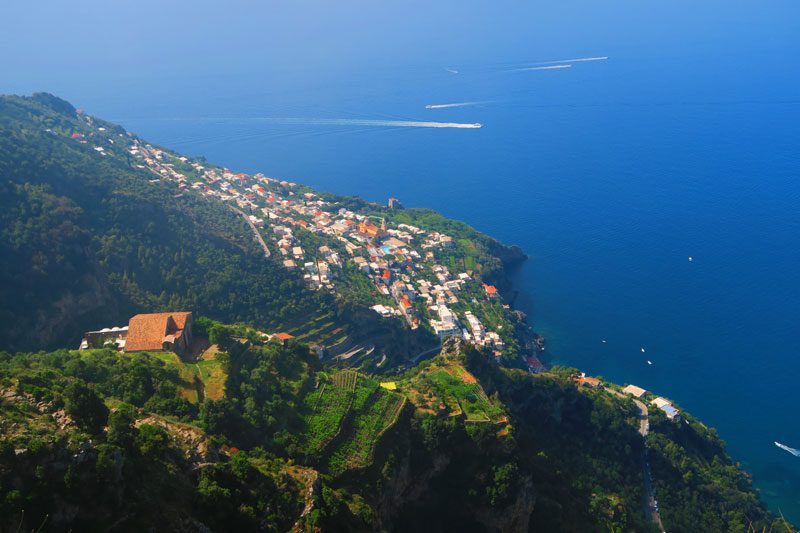

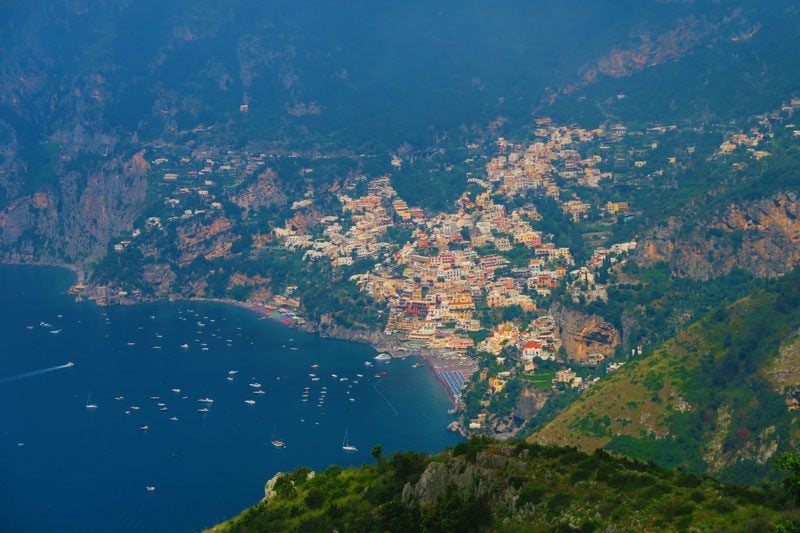
Logistics: book a guided hike or use your car to get around. Since the hike is not circular, you’ll need to get back somehow. We arranged with our hosts at the World Center to drive us to the Bomerano trailhead and pick us up from the Amalfi ferry terminal for a very reasonable fee (including sandwiches). This was one of the smartest things we did on the trip since we were car-free, and carefree for the day, not to mention the ferry from Positano to Amalfi offers exceptional vistas.
The hike to Nocelle takes about two hours. From here, it’s about another 40 minutes of downhill steps and some walking to Positano. I recommend wearing good hiking shoes to protect your ankles, packing 1.5L per hiker, and bringing a change of clothes. Don’t forget sun protection!
Nocelle
The Path of the Gods led us to the village of Nocelle, where we paused for some lemon granita with a view before heading down to the village square for a picnic lunch. There are lots of great-looking bed and breakfasts in the village, definitely a solid alternative over the madness down in Positano (if you have a car). Nocelle is also famous for Ristorante Santa Croce. Unfortunately, it was closed when we passed through.
Nocelle to Positano
Funny enough, walking down the flights of stairs from Nocelle to the coastal road was harder than hiking the Path of the Gods. However, if you take it slow and pause for some views, it isn’t too bad and definitely a lot easier than hiking in the opposite direction. Once on the coastal road, it’s another 20 minutes to Positano (40 minutes total from Nocelle), once again with many scenic stops along the way and a possible beach stop at Bagni d’Arienzo Beach Club if you fancy a swim.
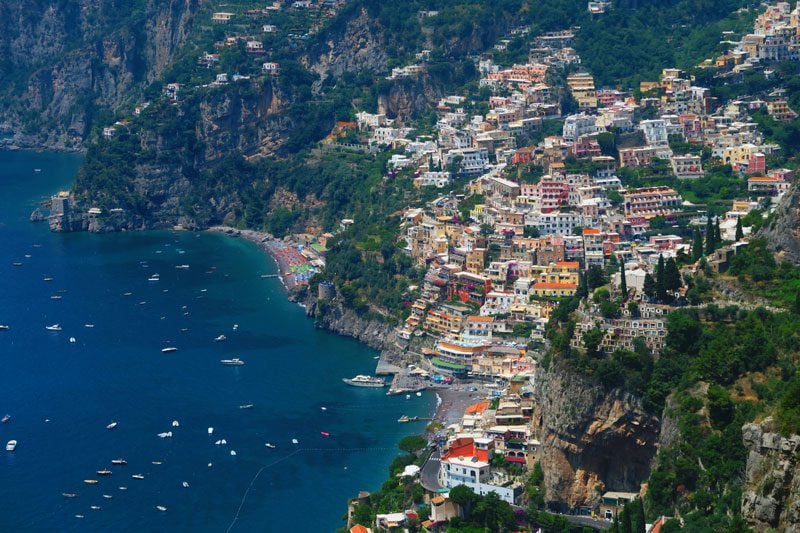
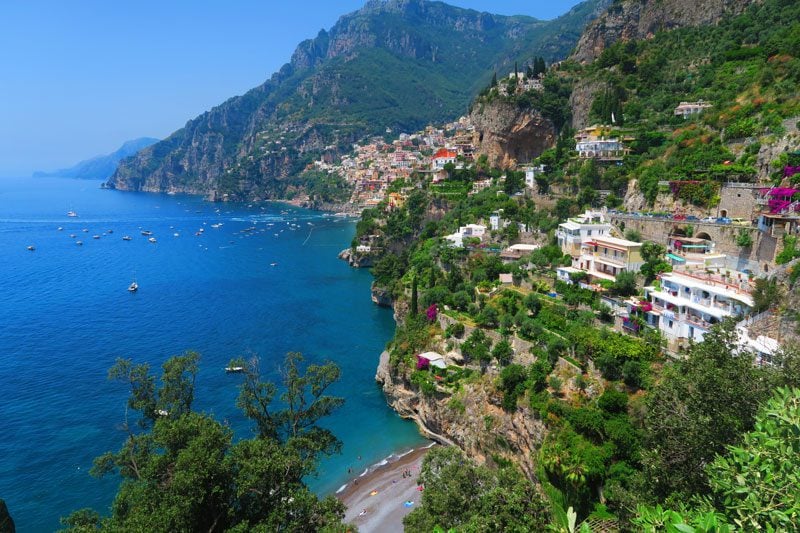

However, if you can find the path down to this seemingly private beach, drop me an email and share the secret!
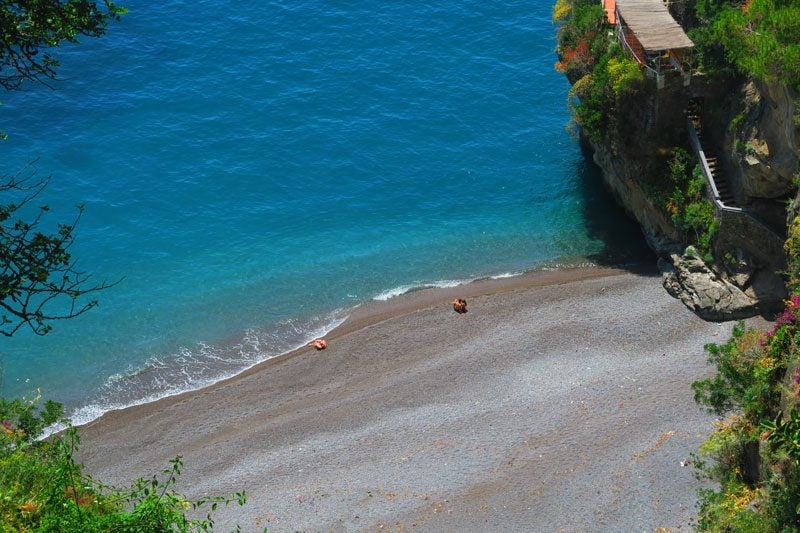
Positano
Positano should be renamed “Posh-itano”. It is no doubt worthy of a postcard, but even more so than Amalfi, it is completely overrun by tourists (perhaps due to its relative proximity to Sorrento) and overpriced. I would recommend avoiding buying anything in its boutiques or so-called “factory ceramic shops”.

Much like its famous sister down the coast, Positano’s main street basically runs through a creek. It can be challenging not to rub shoulders with others as things are very tight around here. However, Via Pasitea is higher in elevation and offers exceptional views of the surrounding area.

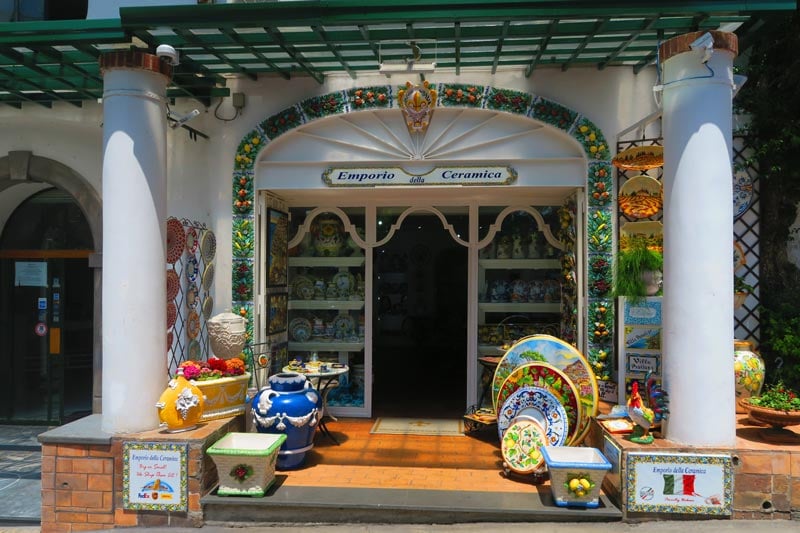


Positano’s main historical attraction is, no surprise, a cathedral. Santa Maria Assunta is in the center of the village, not as impressive as the Duomo in Amalfi, but it’s a nice escape from the June heat and the June noise of the outside.
Ferry from Positano to Amalfi
Frightened at the thought of having to kill a few hours in Positano before the ferry back to Amalfi, we tried our luck and made it just in time for an early ride back. Overall, we spent about an hour in Positano, and even that was too much. The Travelmar ferry from Positano to Amalfi took about 20 minutes. It was incredibly scenic on the way, basically the coastal version of the exact same scenery we saw from the Path of the Gods.
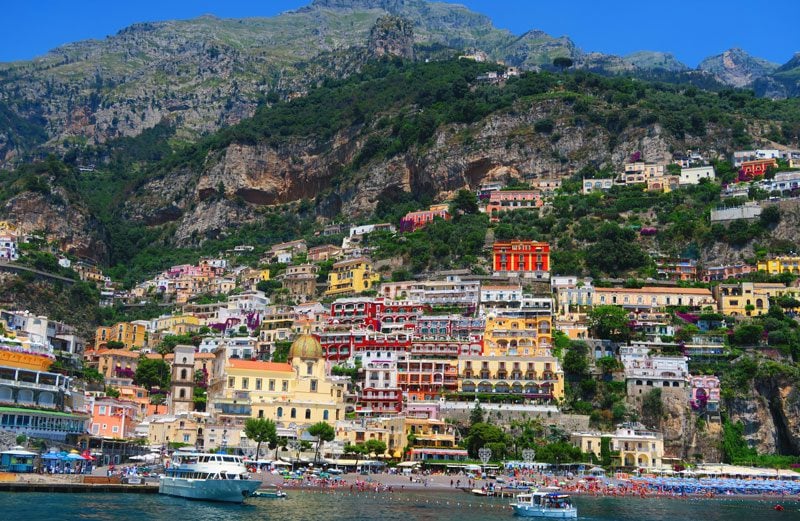
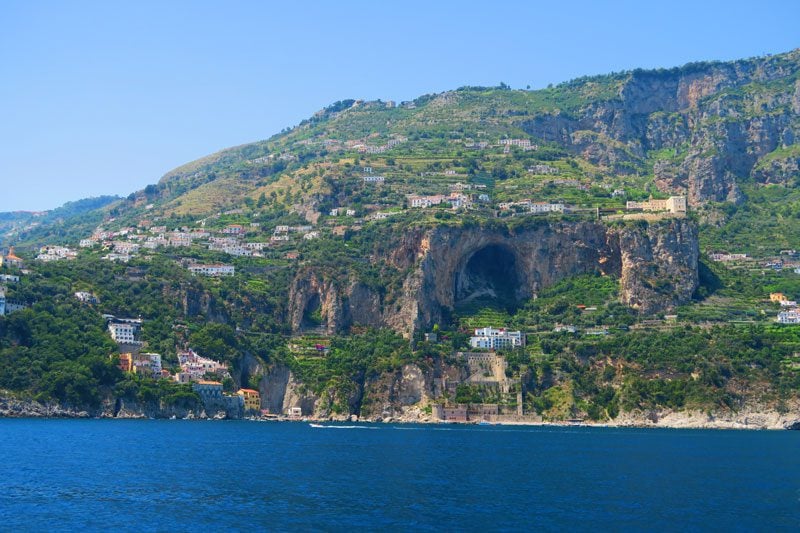
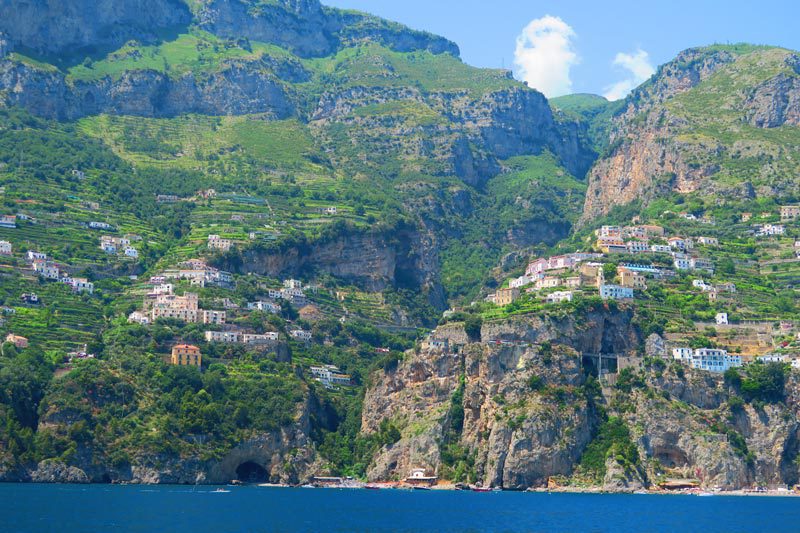
Conca di Marini
After a brief rest, we headed to the beach at Conca di Marini before dinner. This is one of the prettier beaches on this end of the coast, secluded by tall cliffs and requiring a walk down many stairs. Down at the rocky beach, there is a restaurant and cafe, and you can even rent a boat. As with all Amalfi Coast beaches we encountered, they’re nothing to write home about.
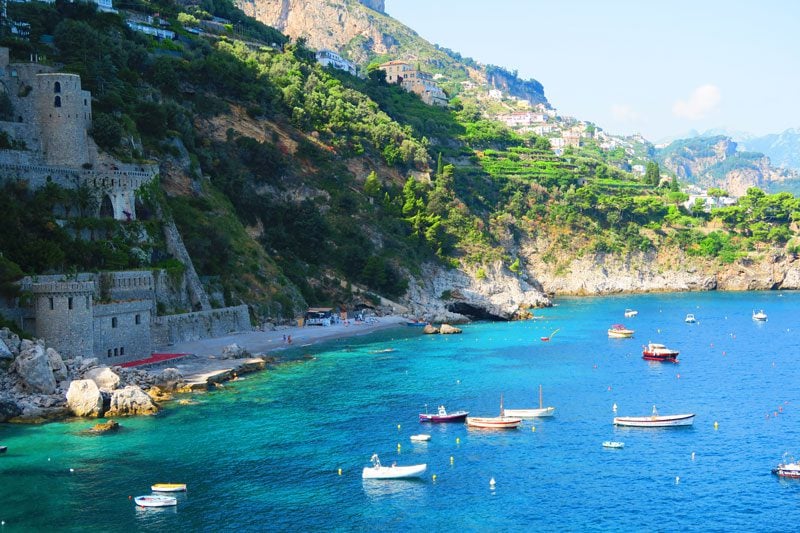
You can alternatively use this time to join a boat tour into one of the cave systems around Conca di Marina. The most famous one is the Grotta dello Smeraldo (Emerald Cave).
Dinner at Nino’s
In the upper section of Conca di Marina, we grabbed dinner at La Piazza da Nino, which is just down the road from Le Bonta del Capo. The prices were geared toward tourists, but the food was great, and the outside seating was a blessing. The feeling was of dining in an old European Village that hardly makes it into second gear, even during the summer tourist season.
